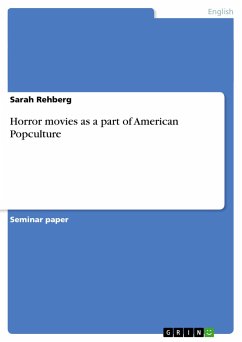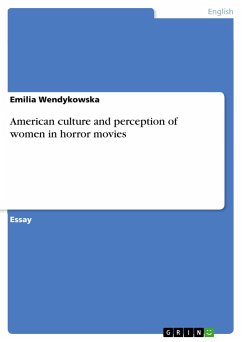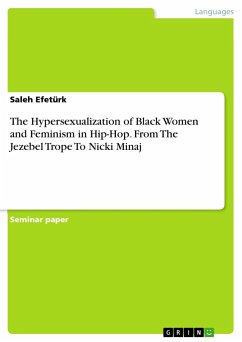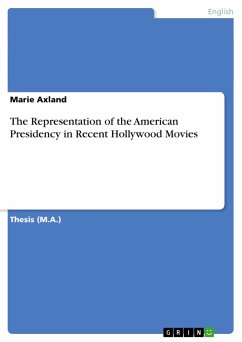Seminar paper from the year 2004 in the subject American Studies - Culture and Applied Geography, grade: 2,0, Ernst Moritz Arndt University of Greifswald (Institut für Angelistik und Amerikanistik), course: American Beliefs and Popular Culture, language: English, abstract: "Fear is the most powerful emotion in the human race and fear of theunknown is probably the most ancient. You are dealing with stuffeverybody has felt...If you are making a horror film, you get to playwith the audiences feelings."John CarpenterHorror movies originate from fictional work that portrays the dark side of life with the primary aim of frightening and terrifying its audience. By presenting horrifying images, of several incorporating sub-genres and repeated themes, such as vampires and werewolves, demonic possessions, evil children, cannibals and zombies, alien invasion and mindcontrol, film makers like John Carpenter create a world where the worst nightmares become true. According to the adolescents who are providing the genre's target group, monster movies always deal with the irresistible temptation of the unknown and forbidden, and therefore shock with a horrific impact of terrifying elements. (...)Since horror and monster movies stand for an important part of the American film industry and with it of its popular culture throughout the last eight decades, it is useful to look at the development of the horror genre in its historical and cultural context, and thus to focus again on the question of interpretive perspective. As horror movies, despite all obscurity, still deal with real fears of a society or the urge to break with social conventions, concentrating on the change of themes, styles and characters of the genre, means to learn more about the American collective consciousness and what was bothering a whole society during the 20th century.
Hinweis: Dieser Artikel kann nur an eine deutsche Lieferadresse ausgeliefert werden.
Hinweis: Dieser Artikel kann nur an eine deutsche Lieferadresse ausgeliefert werden.








